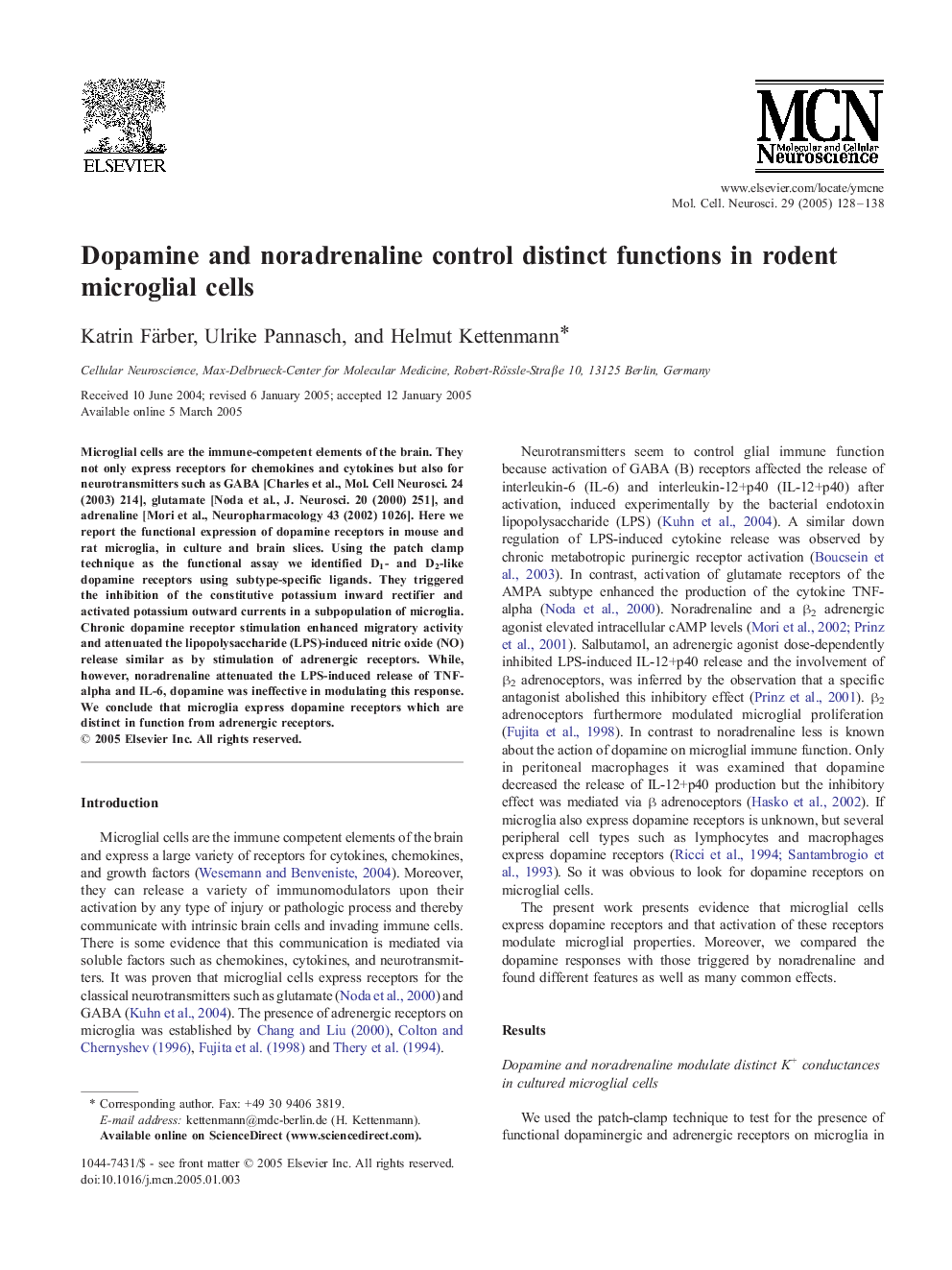| Article ID | Journal | Published Year | Pages | File Type |
|---|---|---|---|---|
| 10956910 | Molecular and Cellular Neuroscience | 2005 | 11 Pages |
Abstract
Microglial cells are the immune-competent elements of the brain. They not only express receptors for chemokines and cytokines but also for neurotransmitters such as GABA [Charles et al., Mol. Cell Neurosci. 24 (2003)214], glutamate [(Noda et al., J. Neurosci. 20 (2000) 251], and adrenaline [Mori et al., Neuropharmacology 43 (2002) 1026]. Here we report the functional expression of dopamine receptors in mouse and rat microglia, in culture and brain slices. Using the patch clamp technique as the functional assay we identified D1- and D2-like dopamine receptors using subtype-specific ligands. They triggered the inhibition of the constitutive potassium inward rectifier and activated potassium outward currents in a subpopulation of microglia. Chronic dopamine receptor stimulation enhanced migratory activity and attenuated the lipopolysaccharide (LPS)-induced nitric oxide (NO) release similar as by stimulation of adrenergic receptors. While, however, noradrenaline attenuated the LPS-induced release of TNF-alpha and IL-6, dopamine was ineffective in modulating this response. We conclude that microglia express dopamine receptors which are distinct in function from adrenergic receptors.
Related Topics
Life Sciences
Biochemistry, Genetics and Molecular Biology
Cell Biology
Authors
Katrin Färber, Ulrike Pannasch, Helmut Kettenmann,
